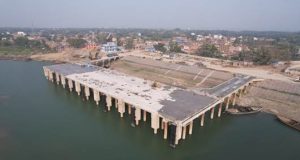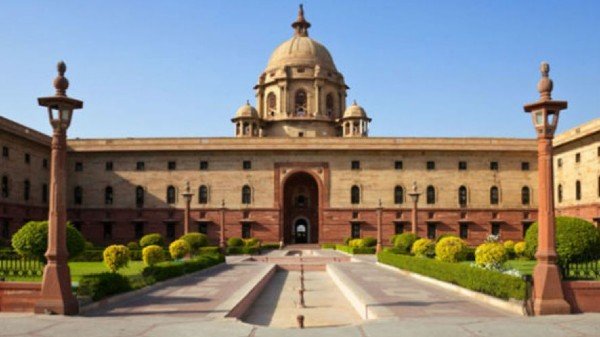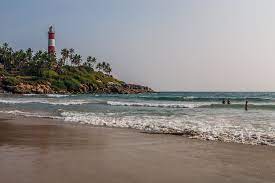In order to achieve the objective of Atmanirbhar Bharat, the Union Cabinet chaired by the Prime Minister Shri Narendra Modi has approved a scheme to provide Rs.1624 crore over five years as subsidy to Indian Shipping companies in global tenders floated by Ministries and CPSEs for import of government cargo in the following manner:
- For a ship which is flagged in India after 1st February, 2021 and is less than 10 years at the time of flagging in India, the subsidy support would be extended @15% of the quote offered by the L1 foreign shipping company OR the actual difference between the quote offered by the Indian flag vessel exercising ROFR and the quote offered by the L1 foreign shipping company, whichever is less. For a ship which is flagged in India after 1st February, 2021 and which is between 10 to 20 years old at the time of flagging in India, the subsidy support would be extended @10% of the quote offered by the L1 foreign shipping company OR the actual difference between the quote offered by the Indian flag vessel exercising ROFR and the quote offered by the L1 foreign shipping company, whichever is less.
The rate at which the above subsidy support is extended would be reduced by 1% every year, till it falls to 10% and 5%, respectively, for the two categories of ships mentioned above.
- For existing Indian flagged ship which is already flagged and less than 10 years old on 1st February 2021, the subsidy support would be extended @10% of the quote offered by the L1 foreign shipping company OR the actual difference between the quote offered by the Indian flag vessel exercising ROFR and the quote offered by the L1 foreign shipping company, whichever is less. For existing Indian flagged ship which already flagged and between 10 to 20 years old on 1st February 2021, the subsidy support would be extended @5% of the quote offered by the L1 foreign shipping company OR the actual difference between the quote offered by the Indian flag vessel exercising ROFR and the quote offered by the L1 foreign shipping company, whichever is less.
- The provisions of this subsidy support would not be available in case where an Indian flagged vessel is the L1 bidder.
- The budgetary support would be provided directly to the Ministry/Department concerned.
- The subsidy support would be extended only to those ships which have bagged the award after the implementation of the scheme.
- Flexibility in allocation of funds for expenditure from one year to another and within the various Ministries/departments of the scheme.
- Ships older than 20 years would not eligible for any subsidy under the
Scheme.
- In view of the enlarged scope of the Scheme this Ministry shall seek
- allocation of such additional funds from the Department of Expenditure asmay be required,
- The scheme would be reviewed after 5 years.
Details:
a) In order to address the cost disadvantage suffered by Indian flag ships, the Hon. Finance Minister Smt. Nirmala Sitharaman, has in her Union Budget Financial Year 2021-22 speech on 1st February 2021, announced a scheme providing an amount of Rs.1,624 crore over five years to promote flagging of merchant ships in India by providing subsidy support to Indian shipping companies in global tenders floated by Ministries and CPSEs.
b) The maximum amount of subsidy outgo for five years would be in the range of an estimated Rs. 1624 crore.
c) Registration shall be done online within 72 hours like the world’s best ships registries. This will make it easy and attractive to register ships in India and thereby aid in boosting the Indian tonnage.
d) In addition to this, it is intended to provide 30 days to any in-flagging vessel to replace the crew on board with Indian crew.
e) Similarly, steps are also being taken to rationalize the manning requirements on the ships by aligning them with international standards.
f) The Scheme has laid out a monitoring framework which is detailed at also provides for effective monitoring and review of the Scheme. For this, a 2-layer of monitoring system is envisaged as mentioned below:-(i) Apex Review Committee (ARC) (ii) Scheme Review Committee (SRC).
Implementation strategy and targets:
a) The implementation schedule as well as the year-wise breakup assuming the maximum outgo @ 15% of estimated subsidy to be paid in rupees crore is given below.
|
|
2021-22
|
2022-23
|
2023-24
|
2024-25
|
2025-26
|
Total
|
| Crude
|
62.10
|
124.19
|
186.29
|
248.39
|
310.49
|
931.46
|
| LPG
|
34.72
|
69.43
|
104.15
|
138.87
|
173.59
|
520.76
|
| Coal
|
10.37
|
20.75
|
31.12
|
41.50
|
51.87
|
155.61
|
| Fertilizer
|
1.08
|
2.16
|
3.25
|
4.33
|
5.41
|
16.23
|
| Total
|
108.27
|
216.53
|
324.81
|
433.09
|
541,36
|
1624.06
|
(Rs. In crores)
b) This will result in a larger and healthy Indian fleet which will enable greater training and employment opportunities for Indian seafarers besides enhancing Indian companies’ share in global shipping.
Impact, including employment generation potential:
a) The scheme has immense potential to generate employment. Increase in Indian fleet will provide direct employment to Indian seafarers since Indian ships are required to employ only Indian seafarers.
b) Cadets wish to become seafarers are required to obtain on-board training on ships. Indian ships will therefore provide training slots for young Indian cadet boys and girls.
c) Both of these will enhance the share of Indian seafarers in global shipping, and thus Indian supply of Seafarers to the world will increase manifold.
d) Further, increase in Indian fleet will also generate indirect employment in development of ancillary industries such as shipbuilding, ship repair, recruitment, banking, etc. and contribute to the Indian GDP.
Financial implications:
Assuming the maximum outgo @ 15%, the estimated subsidy to be paid over the next five years, in rupees crore is given below.
| Ministry
|
2021-22
|
2022-23
|
2023-24
|
2024-25
|
2025-26
|
Total
|
| Crude
|
62.10
|
124.19
|
186.29
|
248.39
|
310.49
|
931.46
|
| LPG
|
34.72
|
69.43
|
104.15
|
138.87
|
173.59
|
520.76
|
| Coal
|
10.37
|
20.75
|
31.12
|
41.50
|
51.87
|
155.61
|
| Fertilizer
|
1.08
|
2.16
|
3.25
|
4.33
|
5.41
|
16.23
|
| Total
|
108.27
|
216.53
|
324.81
|
433.09
|
541 .36
|
1624.06
|
(Rs. In crores)
Benefits:
a) All Indian seafarers
b) Indian cadets aspiring to be seafarers
c) All existing Indian shipping companies.
d) All Indian as well as foreign citizens, companies, and legal entities who are interested in setting up Indian companies and flagging ships in India.
e) Indian economy as a whole due to massive savings in outflow of foreign exchange on foreign flag ships.
Background:
a) Despite having a 7,500 km long coastline, a significant national EXIM trade that is steadily growing on an annual basis, a policy of 100% FDI in shipping since 1997 and Indian shipping industry and India’s national fleet is proportionately small when compared with its global counterparts.
b) Currently the Indian fleet comprises of a meagre 1.2% of the worid fleet in terms of capacity. The share of Indian ships in the carriage of India’s EXIM trade has drastically declined from 40.7% in 1987-88 to about 7.8% in 2018-19. This has led to an increase in foreign exchange outgo on account of freight bill payments to foreign shipping companies, to the tune of around USD 53 billion in 2018-19 and approximately USD 637 billion during the last 13 years.
c) Indian flagged ships mandatorily engage Indian crew and comply with Indian taxation and corporate laws. The operating costs of Indian ships are thus much higher as compared to those of foreign ships. The foreign voyage the cost of operation of an Indian vessel is higher by around 20%. This difference in operating costs arises on account of higher costs of debt funds, shorter tenure of loans, taxation on wages of Indian seafarers engaged on Indian ships, IGST on import of ships, blocked GST tax credits, discriminatory GST on Indian ships providing services between two Indian ports; all of which are not applicable to foreign ships providing similar services. On the other hand, importing a shipping service by an Indian charterer is cheaper than contracting the services of a local shipping company.
d) Though the Government supports a policy of imports on FOB, in reality a major portion of the dry bulk imports such as Fertilizers and Coal is allowed to be imported on GIF basis. Almost 35% of the crude oil imports are also taking place on GIF basis. All of this leads to a loss of opportunity to participate in the market to transport Indian cargo.
e) Since Indian ships are less competitive while compared to their foreignpeers, therefore, the Right of First Refusal (ROFR) policy has not been able to fuel growth of Indian tonnage. Data collected from the Indian National Ship owners Association (INSA) reflects that it issued NOCs in 95% of the cases processed under the ROFR mechanism. Moreover, ROFR does not ensure bankable long-term contracts and it is only an opportunity to match the rate provided by a foreign shipping companies which enjoy a competitive advantage due to lower operating costs. The policy of Right of First Refusal for Indian ships will only be beneficial provided Indian ships are made competitive.
f) A policy to promote the growth of the Indian shipping industry is also necessary because having a bigger national fleet would provide economic, commercial, and strategic advantages to India. A strong and diverse indigenous shipping fleet will not only lead to foreign exchange savings on account of freight bill payments made to foreign shipping companies but would also reduce excessive dependence on foreign ships for transporting India’s critical cargoes. The other benefits of a larger Indian fleet include increase in training opportunities for Indian seafarers, increased employment for Indian seafarers, increase in collection of various taxes, development of ancillary industries, and improved ability to borrow funds from banks.
g) The subsidy support proposed to be provided to Indian shipping companies would enable more Government imports to be carried on Indian flag ships. Further, it would also make it more attractive to flag merchant ships in India as their current relatively higher operating costs would be offset to a large extent through the subsidy support. This would lead to an increase in flagging and would link access to Indian cargo to investment in Indian ships.
 Indian Industry Plus A Pratisrutiplus Suppliment
Indian Industry Plus A Pratisrutiplus Suppliment
















